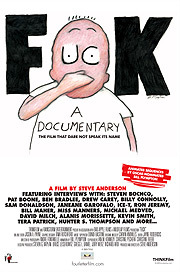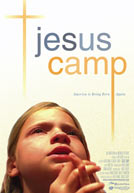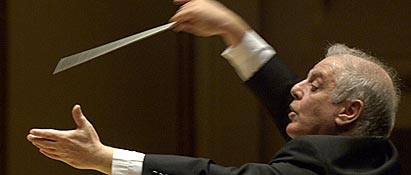The following article was printed in
The New York Times on August 31, 2006.
(Below is a letter I wrote to both the editor of
The New York Times and
The Chicago Sun-Times in response to this controversy.)
Chicago Critic Criticized for an ‘Unfair’ ReviewBy CAMPBELL ROBERTSON
“Irresponsible” — Edward Albee.
“Ignorant” — Stephen Schwartz.
“Incapable of understanding standards of professional and ethical conduct” — Tony Kushner.
The reviews are in for Hedy Weiss, a theater critic for The Chicago Sun-Times for more than 20 years, and they’re not pretty.
The unlikely source of the outrage is a small 30-year-old theater company called Theater Building Chicago, which helps artists develop original musicals. For 13 years the company has presented a weekend-long festival of musicals in progress, called Stages. In the early years, critics were asked not to review the shows, since the musicals were not finished products. Recently, this request has not been explicit.
Enter Ms. Weiss. She and others have written features about Stages in the past, and in recent years Ms. Weiss has written reviews as well.
The reviews came as a surprise, said Joan Mazzonelli, the executive director of Theater Building Chicago. But no one objected, and Ms. Weiss was always invited back.
This year, Ms. Weiss’s review of Stages, which ran on Aug. 16, three days after the festival, was far more disapproving than in previous years. “The eight deeply flawed new musicals seemed to suggest the art form has fallen on very hard times,” she wrote, adding that none of the shows, “whether in semi-staged or concert-reading style, was ready for prime time.”
Before discussing each musical, Ms. Weiss also wrote that she did not sit through any of the shows in its entirety because of their poor quality.
The review came to the attention of a member of the Dramatists Guild of America, Jeffrey Sweet, who alerted other guild members. A tempest of outraged e-mail messages rose up within the ranks of the guild; contributors included Mr. Albee, Mr. Schwartz and Mr. Kushner, as well as Lynn Ahrens, Alfred Uhry and Theresa Rebeck. On Aug. 24, John Weidman, president of the guild, sent a letter to the publisher and editor of The Sun-Times, along with copies of 22 of the e-mail messages.
Ms. Weiss’s decision to review the musicals, the letter said, “was a shocking and irresponsible betrayal of one of the fundamental understandings which makes the creation of new work possible.” The understanding, the letter continued, is that the workshop process “provides an opportunity for writers to evaluate their work as it evolves, protected from the consequences of critical appraisal.”
The letter, which also condemned Ms. Weiss’s decision to give an opinion on shows she had seen only in part, demanded a public apology.
In a written response to the guild’s letter, Ms. Weiss said that she had reviewed the festival in the past without objection and no one had told her she could not review it this time. She also said the festival was a public event, with an advertising campaign and tickets. (A ticket to one performance cost $15.)
“If you are given a press kit and if you are given pictures,” she asked in a telephone interview yesterday, “what are you supposed to do with them?”
Though Mr. Weidman acknowledged that there might have been a misunderstanding about some of the specifics in this case, he said the general principle was still worth emphasizing: works in development should not be reviewed. An experienced critic like Ms. Weiss, he added, should know that, even if she was not explicitly told.
“A professional critic should not write that kind of piece about works that everyone knew were in development,” he said in an interview. “To publish a review of a work in progress is inappropriate.”
Theater Building Chicago sits quietly in the middle of this tempest. Ms. Mazzonelli has distanced herself from the Dramatists Guild, acknowledging that she had not made the festival’s policy clear to Ms. Weiss, whom she had encouraged to attend, along with other members of the press.
“Call it an error of omission is the best I can tell you,” she said. Then a few minutes later, she added, “What’s in my hands is that Hedy Weiss, who is a major reviewer, is upset with me.”
[To read Ms. Weiss's August 16th review of "Stages," click
here.
To read the exchange between John Weidman and Hedy Weiss, published in the Sun-Times on August 31st, click
here.]
 To The Editor:
To The Editor:Chicago Sun-Times theatre critic Hedy Weiss is right: Musical theatre has fallen on hard times. Broadway is, right now, littered with revivals--from "Chicago" to "A Chorus Line" to "Sweeny Todd." And is "Phantom of the Opera" really STILL running?
Unfortunately, new musical adaptations of popular films such as, "The Wedding Singer," "Legally Blonde," and "High Fidelity," don't bode well for the future of the art form. Broadway's tiresome and, at times, laughable line-up reveals the true importance of generating new and compelling art, which, according to Ms. Weiss's Aug. 16th review, is just not happening.
And Ms. Weiss has every right to say so. What good is a workshop, if not for feedback? If new projects remain immune to critique how on earth can we expect them to grow?
Shame on the Dramatists Guild of America for condemning Ms. Weiss's review. They ought to applaud her critical sensibilities. Ms. Weiss is trying to uphold certain standards of quality in the theatre, which otherwise seem to be slipping. Without reviews like this, we may be in for another eight thousand performances of "Phantom."
Regards,
Christopher Devine
[This letter was published in
The Chicago Sun-Times on September 6, 2006.]






































